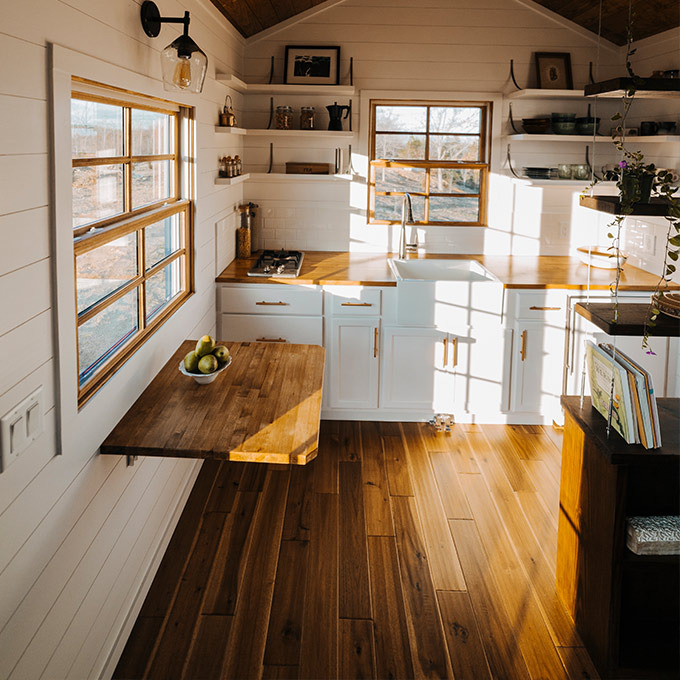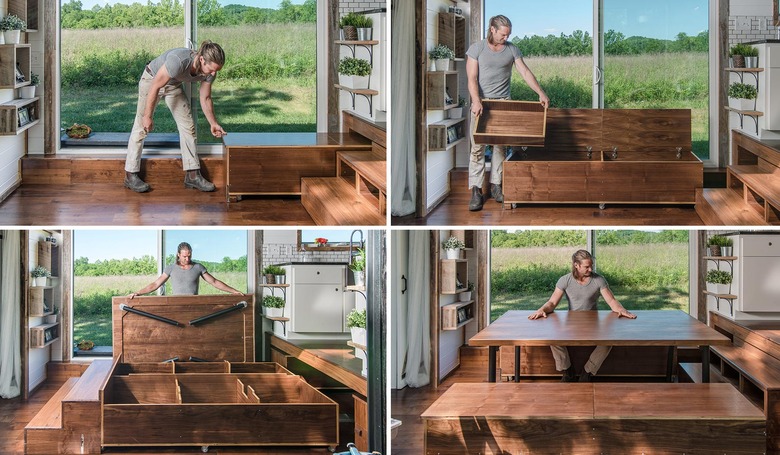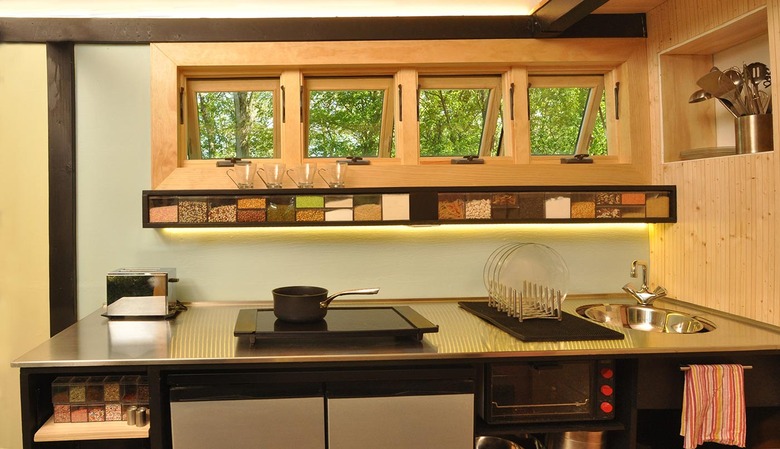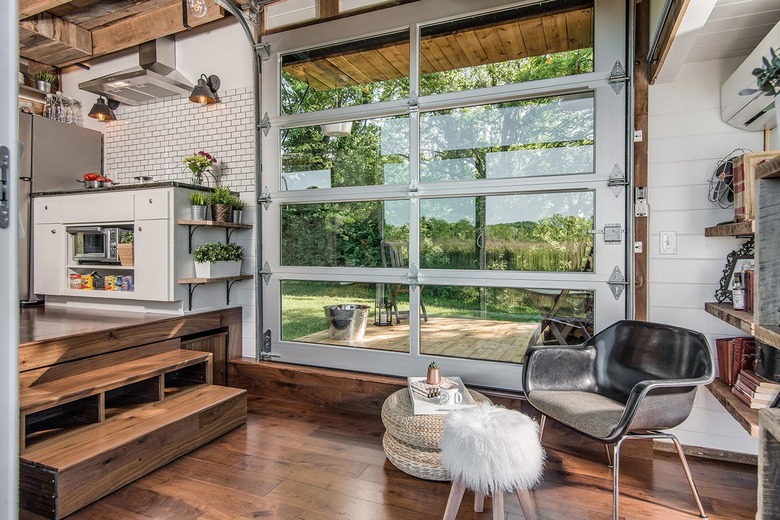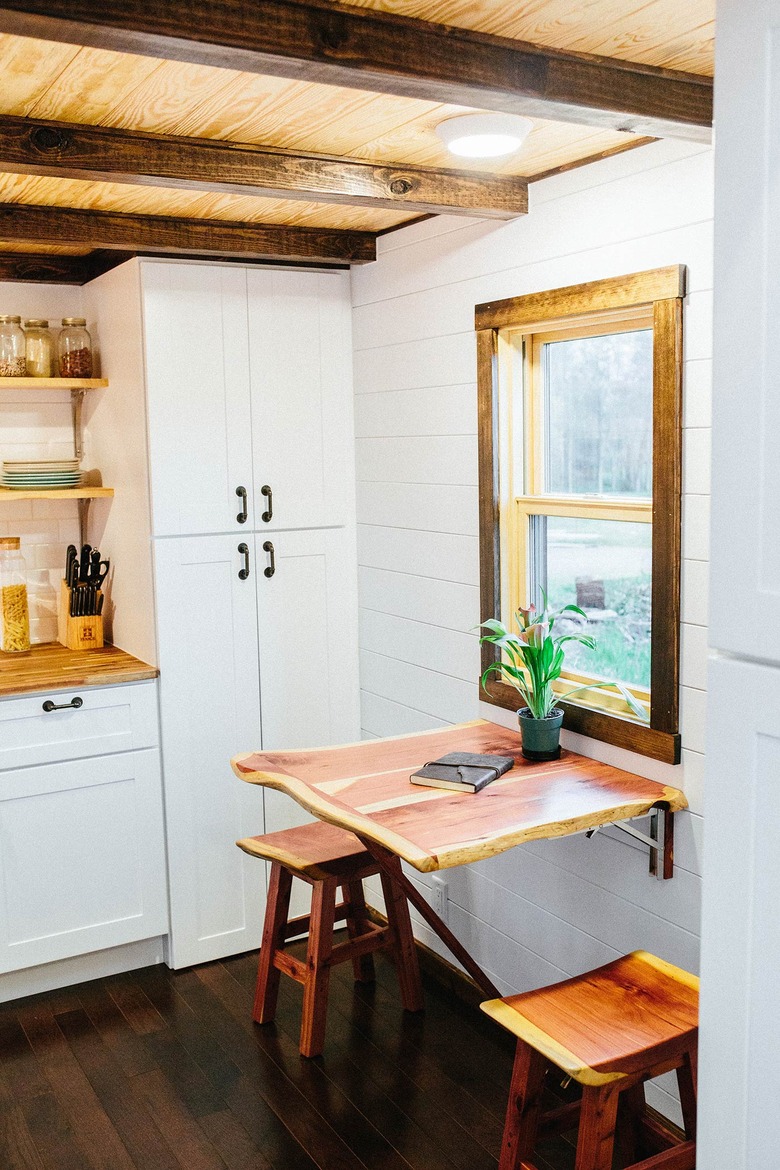How To Organize A Tiny House
For some, the thought of living in a 200-square-foot home might elicit bouts of claustrophobia and anxiety, i.e., Where am I going to put all of my stuff? and Will I be sick of my significant other in a matter of days? But for others, the tiny home lifestyle signifies just the opposite: a life of independence and freedom from possessions, mortgages and debts. It means the ability to travel and live simply.
It also means breaking up with large dining rooms, saying so long to basements full of storage space and cooking in a tiny kitchen—the most anxiety-inducing part for all of us here at TT.
RELATED Space-Saving Cooking Gadgets for a Tiny Kitchen "
Even though the urbanites among us are used to toiling away in small kitchens with zero counter or storage space anyway, most of us have not experienced the unique challenges (and rewards) that a truly tiny kitchen can bring. So, we talk to a few tiny home owners and builders to find out what it's really like to make these impossible spaces work.
Paul Schultz, who designed and helped build the 147-square-foot Toy Box Tiny Home; Jenna Yee and Michael Papillo, who designed and built the 265-square-foot Rustic Modern Tiny House; and Dan Dobrowolski, the founder and CEO of tiny home building design firm ESCAPE Homes all have their share of experience making small spaces livable.
Here are their tips on smart design and organization, which you can use no matter what size your kitchen is.
Appliances
"The main question is usually 'How much and many of everything do you really need?'" Schultz says. "Tiny home people keep it simple and have about four place settings." And all the tiny house experts advise getting rid of bulky or oversize appliances and tools. Dobrowolski, for example, calls large pots and pans "space hogs," saying "You need very few to be a great cook."
Design and Build: David Latimer/New Frontier Tiny Homes | Photo: StudioBuell Photography
"Another key question is 'Can one tool double as another or fold away?'" Schultz says. "There are some practical, well-designed kitchen products that have double or triple uses and are collapsible or foldable." For example, Schultz swears by necessities like "disposable plates made of leaves to save on water; a pot steamer that doubles as a colander; small, square oven-safe Pyrex glass containers that double as food storage; and a set of simple glass mixing bowls that are oven safe and attractive for serving."
Yee and Papillo use a convection oven that also acts as a microwave and toaster oven.
Storage & Design
When it comes to design, "every subtle space is thought of," Yee and Papillo say. And it's important to think outside the box here. For example, the couple's kitchen features something unexpected: a multi-drawer wooden dresser.
"We were working with a very small space and no standard cabinet would fit, and we didn't want to hire a custom cabinet maker. We decided to install a dresser instead and got it for about $70 at a thrift store, then built open shelving above it. The drawers are perfect as a pantry and storage."
They also use pot racks for keeping bulky items out of the way.
Schultz recommends, "An open and adaptable countertop to suit any cooking activity also helps with organization." But versatility doesn't stop there. "The kitchen has a fold-down table with two different tops: One is the eating mode (18-by-36 inches), while the other is the work mode (12-by-24 inches). When not in use, the table folds down on the wall to make more space in the kitchen area. In addition, the living area can be transformed into a casual dining setting if needed."
Wind River Tiny Homes | Photo: Dylan Forsey
And even though appliances are small and place settings few, it's important to think about aesthetics. Yee and Papillo use white dishes and clear glasses "to keep the space more open and uncluttered."
"Natural light is really important as well," they add, "because it opens up the space visually and makes you feel like you have more to work with."
Mind-Set
"I believe the skillful and creative cook can make a wonderful meal for four or more in a tiny kitchen," Schultz says. "It has all the basics of a typical kitchen, just slightly smaller and in a tighter space. The fridge and freezer do have limited storage, which tends to retrain the meal preparer to adopt a more European approach to 'buy for the day' instead of overstocking the fridge. In addition, many tiny home dwellers are gardeners by default. They simply walk outside to pick their ingredients during the growing season and can goods in the colder seasons."
Yee and Papillo agree that cooking and cleaning effectively in a tiny home all depend on the mind-set.
"There's a different way of cooking in the kitchen. You have to clean as you go, so you're not overwhelmed at the end of a meal," they say. "You have to adapt how you're moving through the space: As soon as you leave something out, it feels really cluttered, so it has to be easy to put things away. There has to be a designated place for everything."
And just because these homes are small doesn't mean one can't throw a party.
"Our spaces tend to be very flexible and adaptable with multiple seating areas," Dobrowolski says. "All of our units have a large dining table that is multipurpose, and, of course, dining alfresco is a perfect complement to living in a tiny home."
Yee and Papillo add that though their home is set up for two people to dine, they have hosted more. "We have had more people over, but we'll entertain outside on the patio. We had 21 people here at once when we first launched, and, yes, it was really packed, but we made it work."
Utilize Multipurpose Appliances
Find appliances and tools that have multiple purposes and can be hidden away easily to cut down on clutter and make the most of a small space.
Design and Build: David Latimer/New Frontier Tiny Homes | Photo: StudioBuell Photography
Think Outside the Box
Repurpose furniture in new and creative ways to fit your space, like the bedroom dresser that Yee and Papillo cleverly turned into a custom kitchen cabinet.
Photo: Jenna Yee
Get Rid of Bulky Appliances
Create a bigger work space by keeping your counters clear and make room for appliances that pull double duty, like a convection oven that doubles as a microwave and toaster oven.
Photo: Mieke Zuiderweg
Harness Natural Light
Make small spaces feel bigger by taking advantage of natural sunlight with large, unhindered windows or strategically placed skylights.
Design and Build: David Latimer/New Frontier Tiny Homes | Photo: StudioBuell Photography
Build Up
Keep pots and pans out of sight on hanging racks, and store dry goods, kitchen tools and more on well-organized overhead shelves.
Design and Build: David Latimer/New Frontier Tiny Homes | Photo: StudioBuell Photography
Use the Great Outdoors
Utilize outdoor space as an extension of the dining room by entertaining alfresco, allowing you to welcome more guests without crowding them into a small space.
Design and Build: David Latimer/New Frontier Tiny Homes | Photo: StudioBuell Photography
Try Foldable and Adjustable Tables
Look for tables and other furniture that fold or transform into seating, storage, etc. when needed, or collapse away completely when not in use.
Photo: Dylan Forsey
Buy for the Day
Make the most of a small refrigerator by purchasing only the groceries you'll need for a day or two. You might need to make more trips to the store, but you'll cut down on food waste and enjoy fresher food.
Photo: Wheelhaus


